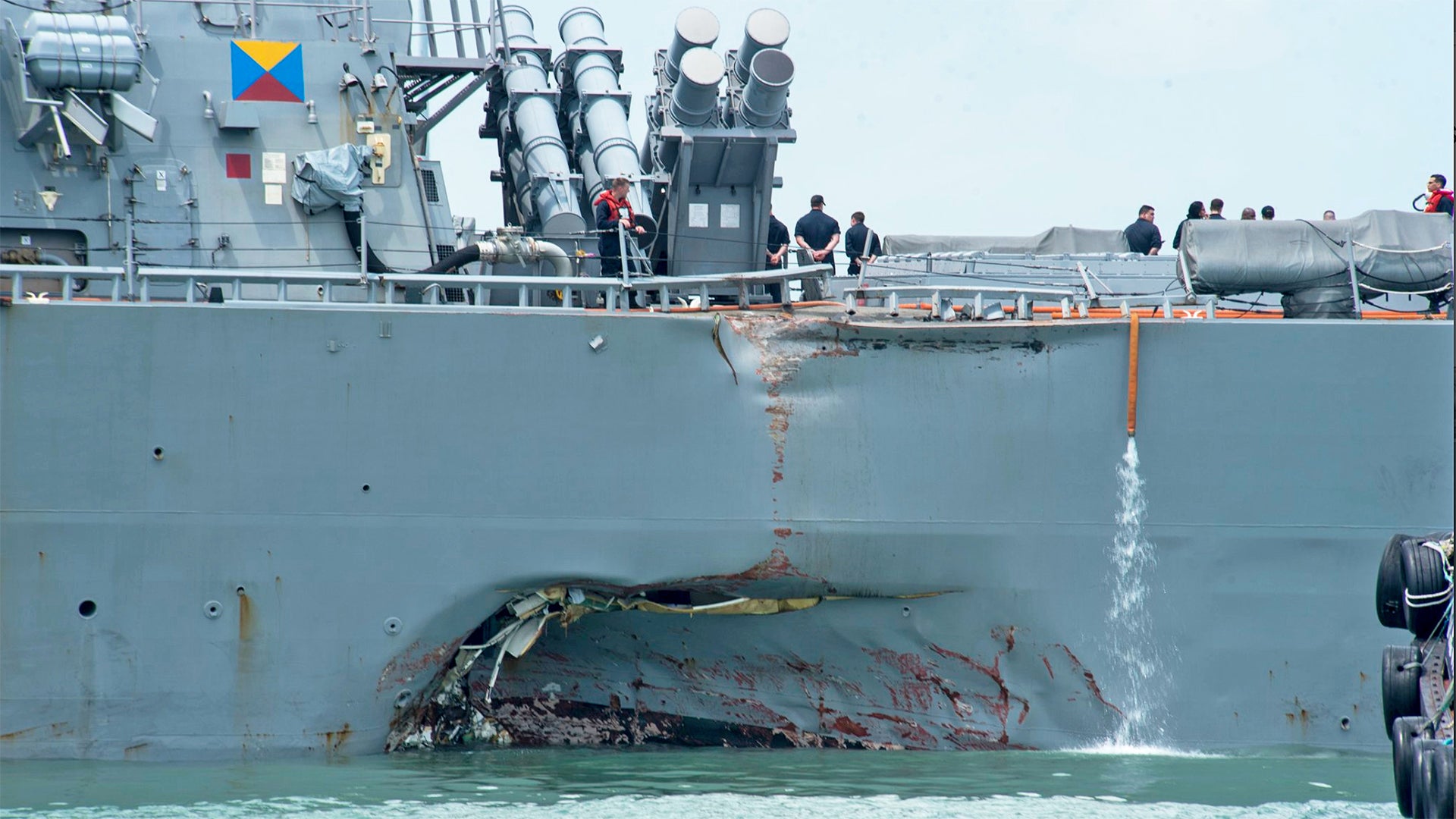Chief of Naval Operations Admiral John Richardson has ordered a fairly unprecedented operational pause across the entire US Navy fleet, as well as a comprehensive review of all procedures and training, with an aim at discovering systemic causes related to the spate of at sea collisions over the last year. The announcement comes just hours after the Arleigh Burke class destroyer USS John S. McCain
collided with the tanker vessel Alnic MC off the coast of Singapore, near the eastern entrance in to the bustling Strait of Malacca.
Make sure to check out our previous coverage on the collision here for full background and context.
Ten of USS John S. McCain’s sailors are still missing, and the ship, along with other nearby US Navy vessels, including the amphibious flattop USS America, have docked at Changi Naval Base in Singapore. According to the Navy, America will assist the destroyer’s crew in damage and recovery efforts:
“While in Singapore, America will provide messing and berthing services to McCain crew members and to support damage control efforts on board. America will also support ongoing searches for 10 missing Sailors. Ship Repair Facility divers are on scene as well to assess the damage to the hull.”
The gash in the side of John S. McCain’s hull is massive, measuring roughly 20 by 15 feet—at least what is visible of it. According to the Navy, multiple compartments were rapidly flooded following the impact, including crew berthing, machinery, and communications compartments.
CNO Richardson noted during his address, which you can see in full below, that the investigation will include:
“Looking at operational tempo, trends in personnel, material, maintenance and equipment. It will also include a review of how we train and certify our surface warfare community, including tactical and navigational proficiency… This review will be on a very tight timeline. I want to get frequent updates. This requires urgent action. We need to get to it and take corrective action.”

In just over a year’s time there have been four collisions at sea involving US Navy vessels—USS John S. McCain
yesterday, USS Fitzgerald
on June 17th, USS Champlain
on May 9th, and USS Louisiana
last August. Beyond the loss of life and damage to the ships and those vessels they collided with, the US Navy’s fleet is under immense demand, and pulling high-end vessels out of service for months or even years for repairs creates major additional operational deficits.

There is no doubt that people are aghast with how these collisions continue to occur, especially considering the most recent ones have involved the most advanced warships in the world—ones that are loaded with high-tech sensors used to closely monitor the world around them over hundreds of miles. Unsurprisingly, China’s semi-state news outlet China Daily has gone as far as calling the U.S. Navy a “dangerous obstacle in Asian waters,” stating:
“While the US Navy is becoming a dangerous obstacle in Asian waters, China has been making joint efforts with the members of the Association of Southeast Asian Nations to draw up a Code of Conduct for the South China Sea and it has boosted navigational safety by constructing five lighthouses on its islands.”
Secretary of Defense James Mattis, who is currently traveling overseas, seems satisfied with CNO Richardson’s review orders:

In the meantime, the search and rescue effort off Singapore continues for the missing sailors, but the search is unlikely to end until the Navy can access the John S. McCain’s flooded compartments either through dewatering or divers.
One of the more controversial factors that is sure to come up in the Navy’s wide spanning investigation will be the way sequestration, and the budgetary decisions the Navy made under it, may have contributed to these incidents.
We will keep this post updated throughout the day as more information comes available.
Contact the author: Tyler@thedrive.com
